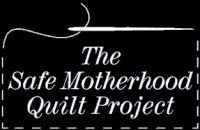My water broke around 2:30am on Wednesday morning. I woke Tommy up to help me put the liner on the bed. He got a little nervous ("I'm not ready yet," ha ha!). When 4:00 am rolled around and nothing had happened yet, I decided to go back to sleep. We got up at 7:30 and took the kids to school and walked around the flea market for what seemed like an eternity, me feeling like I'm peeing on myself with every step. Still nothing. Even the Braxton Hicks contractions I had been having disappeared. Oh well. We went to bed that night. I really didn't think anything was gonna happen yet and I was okay that first night.
Walked the mall Thursday. Nothing. I had a few sporadic contractions. I woke up at about 3:45am that night to a decent contraction, so I woke Tommy up to go get something to eat for me before transition hit and I wouldn't want to eat. How I knew I needed to eat then, I don't know. Labor could have lasted hours and hours for all I knew. But something told me to eat before it was too late. Sure enough, by the time he got back from Wal-mart I had had several contractions I couldn't sit still through. I was already thinking "That's it, I'm done!" So I knew we were close and I just could not believe it was happening so fast.
I wanted to be on the couch bed in the living room. Don't ask me why...Tommy and I had already talked about him having to appease even the weirdest things for me during labor, so he set it up and put the extra liner he bought "just in case" on it. Roseanne was on. That's how I timed things. By episodes of Roseanne.
I never had to ask Tommy for anything. He just knew. He knew to get me water exactly when I needed it. He knew when to talk and when to be quiet. He knew when and where to rub or touch without my ever talking out loud to him. The contractions were just run-on waves by 5:00 am. No break. Then all of a sudden I needed to know where the head was so I felt in there and for a moment when I felt the posterior fontalles it felt like toes. I thought "shit, it's breech!" So I felt again and realized what I was feeling. Then I realized I wasnt having contractions anymore. Whew, a break.
At this point I was on the floor. Tommy put some chux pads under me and I sqauted. When I was on the bed I kept trying to lean so far forward that it was relieving pressure from my cervix, and I knew that was accomplishing the opposite of what needed to be accomplished. So on the floor I go. I needed something but I didnt know what. Tommy put a few pillows in front of me to lean on in between contractions, and it was perfect. Then all of a sudden I felt a contraction coming and started saying "No! wait! Im not ready yet" and Tommy said "Yes you are. You're doing it!" And the weirdest feeling happened. My stomach started heaving. Like I was throwing up. I realized my body was not waiting for my mind to catch up. It was happening with or without my input.
I helped a bit and went back and forth between holding my labia and feeling the head. That was a comfort to me. To know whatever convulsions my body was doing was working. I would have what felt amazingly like ten minutes between the pushing contractions. But it was probably only a few minutes. It was awesome. In between contractions I could breath deep and feel baby move down a little when I exhaled. I felt one more time during a push and felt her about to crown so when I stopped pushing I just kind of held so baby wouldnt slide back up and Tommy was behind me with his hands down there waiting. On the second to last push he said "Wait! I gotta move! Your butt is gonna explode!" Apparently my hemmerhoids got so huge he thought they would explode on him and he wouldnt be able to catch. Ha! So he slid to my side and resumed his stance.
On that push we saw the beginning of a head. I immediately said "Oh no. I can't do this! What was I thinking?" and Tommy said "Well, I'm pretty sure it's too late for that now." It was exactly what I needed to hear. One more involuntary convulsion from my stomach and I had a head between my legs. So I stopped pushing and was going to wait for the head to turn but by the time my body started pushing again baby hadn't turned. Instead a tiny little goo drop slide neatly into Tommy's hands. My hands were under his so I grabbed the baby and he looked at the time. 6:55am. I looked up and realized how dark it was. It was perfect. I realized the cord was over a shoulder and loosely around the neck so I slipped it off and Tommy said "Oh my god! It's a girl!!!" And he started crying.
 All of a sudden I was freezing. It was pretty warm in the house. Tommy had put the heat on before he left to get food. But I was shaking partly from nerves and partly from a bizarre coldness. So Tommy got a blanket out of the hall closet and wrapped it around us. A few minutes later out the placenta came. It looked normal to me. I was passing such large clots that first hour that Tommy was getting nervous, and for a moment I thought I was still passing placenta but I felt okay so we got in bed and sometime later cut the cord.
All of a sudden I was freezing. It was pretty warm in the house. Tommy had put the heat on before he left to get food. But I was shaking partly from nerves and partly from a bizarre coldness. So Tommy got a blanket out of the hall closet and wrapped it around us. A few minutes later out the placenta came. It looked normal to me. I was passing such large clots that first hour that Tommy was getting nervous, and for a moment I thought I was still passing placenta but I felt okay so we got in bed and sometime later cut the cord.I couldn't have asked for a more beautiful birth. Nicole woke up about 10 minutes before she was born because I was screaming. Then Luke came out and started rubbing my shoulder telling me I would be okay. I was so proud of my three year old. I couldn't believe I was not scaring him. But the opposite. He was comforting me. All the knowledge I had about it never came in to play. Even though my brain knew what to do, my body knew before my brain let me know. It was amazing. Tommy was amazing. It was like we didn't need words to communicate. His subcoscious knew just as much as mine did. Luke didn't want to go to school. He wanted to stay with his baby girl. Hayden is having some "I'm the baby" issues but we're working on it. She nurses great!
My nipples were sore the first few days but are fine now. I feel great. The only thing that "hurt" after were the skidmarks I had on my labia which are now in that slightly itchy phase of healing. No more pain when peeing. No muscle soreness from pushing for nothing. With Luke my muscles were so sore after I couldn't get out of bed without help for two days. She is one week old today. It has flown. HayLee Marie McKee was born Friday October 9th 2009 at 6:55am and was 5.5oz and 18 inches long. She's perfect in every way.
Editor's Note: Unassisted childbirth is legal in the State of Florida. Goldie pursued care with licensed midwives, but the law that regulates their practice prevents them from accepting clients who have had c-sections more recently than two years prior to their estimated due date. Goldie's third child, Luke, was born by c-section in 2008.




















